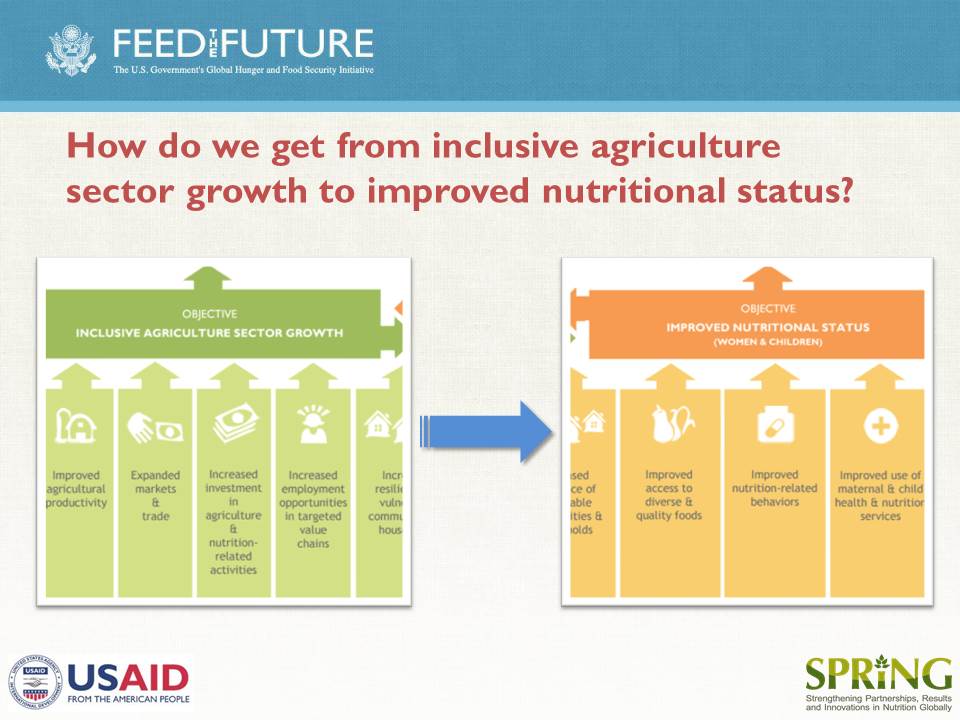
In late May of 2014, international leaders from the public health and private sectors gathered for the first ever Feed the Future Global Forum. Cambodian agricultural officials shared space with Feed the Future project implementers from Tajikistan, and USAID/Washington staff exchanged ideas with business CEOs based in South Africa. With a three-day agenda as their guide, this multisector and multinational crowd came together to maximize the impact of a U.S. Presidential Initiative.
Heather Danton, SPRING’s Food Security and Nutrition Director, was invited to speak alongside senior leaders of USAID’s Bureau for Food Security, the 1000 Days Partnership and IFPRI’s Poverty, Health, and Nutrition Division. As Ms. Danton worked through her slides and highlighted the Feed the Future global objectives, her main message was clear: there are two ‘halves’ of this program, and bringing them together means serious work in order to link nutritional outcomes with investments in the agriculture sector.
“I was surprised that presenters, Missions, and implementers were not bringing nutrition into their discussions more. If we are going to reach the outcomes expected under Feed the Future, it will be necessary to both make agricultural activities more nutrition-sensitive and to increase the number of women and children being reached with nutrition-specific interventions.”
She added, “There is no silver bullet for this. It requires comprehensive programming across sectors.”
The impacts of Feed the Future programming are being felt—countries’ agricultural planning and research are taking root, and improvements in seed systems and value chains continue to reach smallholder farmers. But alongside these gains, it’s clear that SPRING will fill a need within Feed the Future’s broader goals: ensuring improved agricultural planning and practices have the opportunity to impact nutrition.